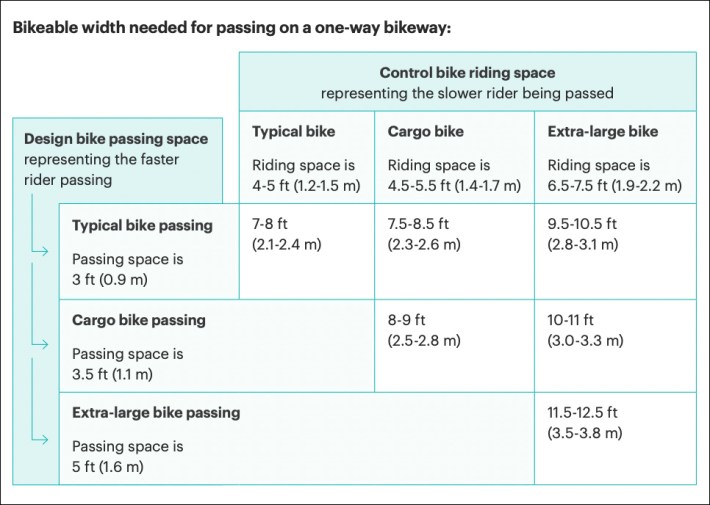Could it be life in the fast lane for city cyclists?
The crush for space in existing bike lanes has intensified in recent years with the growing popularity of e-bikes — but relief may finally be on the way later this year, city officials said this week.
Department of Transportation planners are exploring new street designs to make room for electric and non-electric devices to co-exist safely in city bike lanes, officials revealed on Monday as part of Mayors Adams's plan to reduce crashes and lithium-ion fires tied to the devices.
"DOT is working to update and pilot different designs on New York City streets," officials wrote in a report [PDF] accompanying the announcement. "These design updates will include various design strategies such as wider or multiple lanes, passing zones, bicycle speed signal timing progressions (also known as green waves), bike boulevards, improved curbside policies to reduce double parking, added bike parking for different uses, and cargo bike loading zones.
"Initial design and data collection efforts" have already begun, the report added. And a spokesperson for the DOT told Streetsblog that the city plans to unveil — and implement — wider designs on existing and new bike lanes this year, even before $2.9 million in federal grant money for the effort becomes available in 2024.
New York City's narrow bike widths aren't exclusively a problem of the e-bike era, but a nagging concern for city cycling in general as the number of cyclists increases and more people and delivery workers use large cargo bikes.
Many bikes lanes already pose a danger to their users due to insufficient space for cyclists. A 2021 Streetfilms investigation found bikes and other micro-mobility devices accounted for 44 percent of the vehicles on First Avenue and East 60th Street — despite just 8 percent of the road dedicated to safe cycling. Yet city officials have yet to take steps to widen the protected lanes there or anywhere.
DOT on Tuesday declined to provide specific renderings or designs for the expanded bike lanes. The federal grant will pay for the agency not only to explore wider bikes lanes, but also develop new data tools to shape those wider lanes and other "design solutions," a spokesperson said.
The "exploration" of wider bikes lanes is also on the agenda, the rep said.

DOT planners won't have to look far for ideas for how to make room for the growth of two-wheeled travel. A report released in February by the National Association of City Transportation Officials laid out design guidelines for bike paths in the era of many micro-mobility devices — recommending wider lanes as well as "maneuverable space at intersections" and signage that "makes the best place to ride obvious."
A typical bike requires three feet of passing space, while cargo bikes require 3.5 feet, according to NACTO's guidelines (graphic above). The report cites examples of double-wide protected lanes in Chicago and Vancouver, a city in Canada.
E-scooters — which were not the subject of the Adams administration announcement — require additional passing space as well as other improvements, such as smoother riding surfaces, according to the report.
New York officials will have to balance the need for passing space with the threat of cars sneaking through, said Brooklyn-based urban planner Mike Lydon.
"If you're super-sizing the bike lanes for more capacity and to be able to separate faster and slow bikes, that's great, but then you have to make sure you're controlling for vehicle incursion into those spaces," Lydon warned. "Here in New York we just don't do a great job at limiting vehicular access."
Lydon said officials should follow the lead of Paris on its Rue de Rivoli, where officials "inverted" the amount of space devoted to bikes and cars.
"Bikes and scooters ... have 80 percent of the space, so there's plenty of room for overtaking and mixing," he said of the famed French flâneurie.
"If you think about it that way — you totally invert it — it would really dramatically make a difference for all the modes that aren't motor vehicles."
Additional reporting by Kevin Duggan






